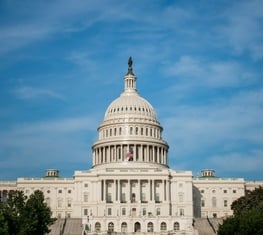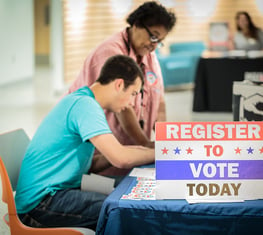Climate Change
"Today's Keystone decision is encouraging and puts the health and safety of Americans ahead of blind reliance on fossil fuels," said President MacNamara.
The League will participate in the third annual #GivingTuesday campaign on December 2, 2014. Generous League supporters have offered to match every #GivingTuesday donation we receive dollar-for-dollar, up to $10,000.
From the moment I stepped onto the bus headed to the People’s Climate March chartered by the Sierra Club, I knew this was going to be an extraordinary day.
This week, the United Nations (UN) hosted a summit on climate change with leaders from around the world. The League of Women Voters of the United States participated with a small group of civil society leaders at the Summit.
League members are gathering with thousands of activists from around the world at the People's Climate March in New York City to push for strong action on climate change.
On September 23, the UN will meet in NYC with the goal of setting meaningful solutions to fight climate change. In advance of the summit, we are participating in the People’s Climate March.
League members were offered a unique experience to join a call with the Administrator of the Environmental Protection Agency (EPA), Gina McCarthy to discuss the EPA's Clean Power Plan, which limits carbon emissions from power plants.
Power plants are responsible for 40 percent of the carbon pollution in the United States, making them the single largest source of that pollution in the country. And while carbon pollution is invisible, its effects are anything but.
The League commends the EPA for taking the necessary steps to cut carbon pollution and fight climate change, while also urging the agency to establish even stronger carbon rules to protect our planet.
President MacNamara delivered comments on the Clean Power Plan at the EPA’s public hearing in Atlanta. The comments commend the EPA for taking the necessary steps to cut carbon pollution and fight climate change. They also urge the EPA to work with state stakeholders to make the regulation stronger and reduce carbon pollution levels 35 percent by 2030.




